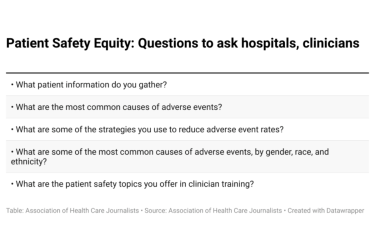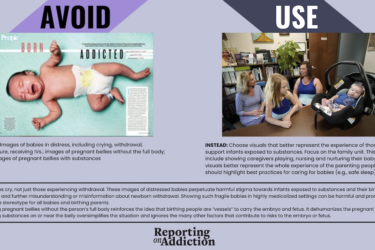
A South Dakota newspaper on Tuesday won a seven-year legal battle to obtain information about retailers who participate in the food stamps program. The ruling is a victory for government transparency on an issue that has been a subject of AHCJ advocacy.
The Argus Leader of Sioux Falls reported that a three-judge panel of the Eighth Circuit Court of Appeals on May 8 cleared the way for the U.S. Department of Agriculture to release information on how much money individual retailers make from participating in the Supplemental Nutrition Assistance Program, the formal name for the food stamps program.
“Taxpayers need to know where their money is spent,” Cory Myers, the Argus Leader’s news director, told reporter Jonathan Ellis. “This information has importance beyond South Dakota, as SNAP is one of the nation’s biggest safety net programs.”
But as Ellis notes in his story, the battle may not be over. The House Agriculture Committee’s version (sections 4022 and 4026) of the 2018 Farm Bill includes language requested by the industry that would bar the release of any sales transaction data from retailers.
“We applaud the Argus Leader for its tenacity in pursuing this lawsuit and fighting for taxpayers’ right to know how their money is being spent,” said Dr. Ivan Oransky, AHCJ president. “And we once again call on Congress and the USDA to put an end to this pointless secrecy.”
AHCJ’s Right to Know Committee has long protested the extraordinary secrecy that surrounds SNAP spending, which came to about $70 billion in the 2017 fiscal year. As we wrote in a 2013 op-ed, other federal benefit programs are more transparent.
“Medicare and Medicaid routinely identify the hospitals and clinics that receive government dollars and list how much each is paid for the services provided,” said the piece, which ran in the Los Angeles Times and 40 other newspapers. “News outlets have been free to report where recipients of the Temporary Assistance for Needy Families program use their EBT (electronic benefit transfer) cards to withdraw cash assistance. But SNAP is kept under wraps.”
The Argus Leader lawsuit addresses only one of two categories of food-stamp information that the USDA withholds: data about vendors, which would reveal how much money each participating retailer takes in from this huge federal program.
In addition, the agency also does not reveal what foods people are buying with their SNAP benefits, which could inform public policy on obesity and nutrition. Congress has forbidden this disclosure.
In 2013, AHCJ and six other journalism and open-government groups wrote to Tom Vilsack, then the USDA secretary, asking him to release the data. He declined.
The USDA had argued that such information is exempt from the Freedom of Information Act. When the court ruled against it in 2014, the federal agency did not appeal.
The Food Marketing Institute, an industry trade group, asked the court to block the release, arguing that the information would enable competitors to calculate the stores’ annual sales. Tuesday’s ruling rejected that argument, with the judges saying that food stamp data would not be detailed enough to cause competitive harm, according to Argus Leader story.









